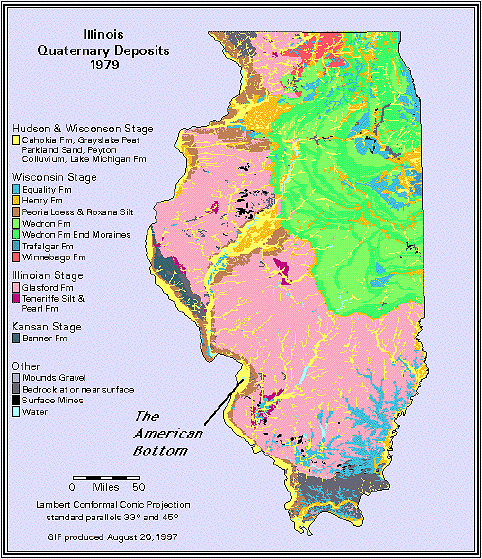
Quaternary Deposits in Illinois.
This deep and complex suite of alluvial and glacio-fluvial sediments includes coarse-grained channel deposits, sand and gravel point bars, fine-grained fluvial overbank deposits, old natural levees, and a variety of clay-rich swamp, slough, and backwater lake deposits. These deposits are largely part of the Henry and the Cahokia Formations (including Cahokia alluvium, and Grayslake peat). At the bluff margins wind blown dust (created by the ice-sheet grinding rocks into small particles and depositing massive volumes of the resulting silt at the glacial terminus) accumulated to form the Peoria Loess and Roxanna Silt Formations during the Pleistocene. Veneers of colluvium and alluvium (the Peyton Colluvium) washed from the surrounding bluffs and uplands also formed at the bluff-floodplain interface in the Late Pleistocene and Holocene.